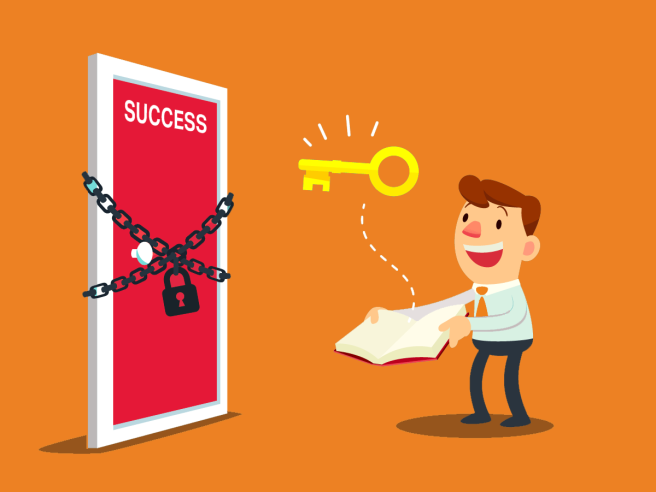A review of a sales training course from the perspective of a salesperson wishing to improve their sales skills. In many companies new salespeople begin their role with just some company centric basic training. This approach to sales training creates the impression that a salesperson should first prove themselves before any more investment in their training. Yes, we all know that selling is a producers role, and we are measured by the revenue we bring in. Like all professions the skills needed to sell successfully can be learned and mastered with training.
A Sales Training Course Should Include The Following
We emailed over 1000 salespeople and asked them questions on their sales training course criteria. Here is a summary of their answers in terms of popularity. The one thing to note is that no one single sales training course can cover all the skills you need to sell today. The reality is that you are the only one who can decide where gaps in your sales skills exist. So, explore different themes and course options to find the sales training courses that work best for your own unique situation.
Sales Skills 101
The top reply from our survey was that a Sales Skills 101 is the entry point of sales training courses. Sales skills 101 type course is ideal for any level of salesperson, from those starting out, to those who want to refresh their sales knowledge. It should cover all the major sales steps and sales tactics that you will need in the sales process. Topics worth noting that you should look out for would include defining selling, the buyer whys, how to start a sales conversation, the steps in a typical sales process, understand the difference between roadblocks and objections, plus all the insight needed to close a sale.
Did you know that according to Forbes magazine, 55% of salespeople lack basic sales skills. Many salespeople tend to forget about serving their customer’s needs first. Learning to handle rejection, identifying target customer profiles and mastering sales negotiations are vital skills you need to possess.
Soft Sales Skills
A good sales training course will also cover the soft skills. These are the sales skills for the way you think, the way you interact with others, how you manage yourself and how you communicate. The modern buyer is savvy and expect s more than the value that comes with the product. They want more than the value your company adds in. They want unique, relevant, personalized value. The only place they can get that is from you, the seller, human-to-human. They expect you to create value in every interaction with them. Your hard sales skills probably haven’t equipped you for value creation.
Digital Selling
Remote selling is here to stay. So digital selling has become an important aspect in the sales process. Sales is being fundamentally impacted as people and businesses change the way they buy. It’s time for a new approach to sales: to blend in digital selling to address this rapid and dramatic change in buying behavior. All of us will need to upskill in how we sell to attract and bring value to buyers across multiple channels including social media, video, etc. Broadly speaking, this means embracing the concept of digital selling. At its essence, digital selling empowers you to broaden your net, allowing you to gain appropriate insight on and relevance to customers — winning their trust and, ultimately, increasing revenue and reducing sales stress.
According to an EY study, salespeople that utilize digital selling techniques are 5.7 times more likely to secure prospect meetings and hit 150 percent of their quotas on average.
Customer Target Selection
If you are to maximize your return on sales effort (ROSE), we need to understand your ideal customer profile and then which customer set you will target. Every sales training course should go into detail on this topic. Customer target selection solves who is your target customer(s), which will serve as a focus for your sales activities, decision making, and other sales tactics. Sales success is more likely to come from figuring out which businesses would understand your product or service and recognize the most value in using it.
The typical output of a customer target selection is a customer persona, which outlines salient descriptors of your target customer, which are relevant and helpful in deciding where to spend your time. Rather than identifying the unique needs of one individual, you’ll need to identify the unique needs of multiple people along the purchase decision making line.
Deciding on the right target customer is both art and science. The art is defining the target customer in a way that gives your value proposition a listening ear and allows you to differentiate versus competitors.
Learn To Build Compelling Value Propositions
Your value proposition, is the “what” and the core of your business activity, composed of your products, services, promises and pricing of the business. If customers believe they will get more value out of your value proposition than your competitors, over time you will win. Ultimately, every buyer opts to purchase products and services to improve their lives in some way, to extract value. Value equals the rational and emotional benefits customers get from selecting your product or service minus the price they pay.
Learn to craft value propositions with clear statement that encapsulates three key criteria:
Relevancy: Explains how your product improves a specific customers’ life or solves their problems
Value: Deliver quantifiable concrete benefits
Differentiation: Shows your ideal customer why they should buy from you and not from the competition.
To get buyers to listen to your sales conversations, you need to ensure that you have a value proposition(s) for your product or service that has both sufficient points-of-parity (POP) and points-of-difference (POD).

Undertaking A Sales Training Course Online
When it comes to selecting from the range of sales training courses you can find via online search, the considerations should be sales training course content and pricing. Your decision to upskill is an investment in your time and success, so it is important for your to choose a training course that works for your unique needs. If like many salespeople today, you are working remotely or in a hybrid model, then you should consider sales training courses online. Here are some reasons why this is one of the best sales training methods for you.
Sales Training That Provides You With Flexibility
No matter how keen you are to learn new sales skills, it won’t matter if you can’t easily access your training content when you want. By considering online sales training you should have more flexibility when or where to do your training plus what topics you want to cover.
Many salespeople and organizations now choose sales training courses online due to 24/ 7 accessibility and reducing travelling or classroom time. One big advantage is you can access your training course whenever and wherever you need to. Another bonus is that you do not have to take time out of your workday to access tips, insights, or answers to questions as they arise in your daily sales activity.
Sales Training Unique To You
To be really effective, sales training should cover the topics an individual salesperson wants to cover or brush up on. The traditional classroom training is often inconvenient and inconsistent plus designed for a more general audience. Also, it can be difficult for a sales trainer to constantly research and update the sales training courses material to reflect the latest insights.
Competing voices and inconsistent approaches can lead to time wasting, low retention rates and a jumbled learning pathway that does not address the needs of the individual salesperson. However, sales training courses online can deliver a smooth, always on and available resource to be used as needed. Constantly updated material with a library of videos, cheat sheets and guides. This can decrease the time for a salesperson to upskill or acquire new sales skills.
Increases Retention
As online sales training courses are available 24/7, the learner can fir in their training at a time that works for them. Research into learning shows that people improve learning and retention of information better when they can choose their own schedule. Sales training online are accessible for salespeople at any time. They can watch and rewatch sales videos, read or download the sales training course materials and brush up on their skills whenever they want or need to. They can complete or revisit the training courses materials at their own time or pace, which has been proven to increase engagement and retention of information.
Invest in continuous learning
Because the training courses are easily accessible, they act as an “on demand” sales coach especially when so many salespeople are working remotely or have demanding roles. Online training in any discipline is the digital route to sharpen skills and stay abreast of the latest trends and sales insights to win more customers. Buying (and indeed selling) has changed and will continue to evolve with the influence of social media, access to information and buyer control of the sales process. The salespeople who will thrive in this new reality are the ones who can add value to the buyer, bring something different to the sale and are seen as credible. This points to some level of ongoing training to stay sharp.

Guide for creating a sales training course
As the shift to remote and digital continues apace, the requirement for sales training has never been stronger. As a profession which is results focused it is important to develop great sales training experiences. Here is a quick guide on how to create sales training courses.
Microlearning
Microlearning via short impactful videos offers a focused method to help salespeople acquire specific, actionable sales skills. Microlearning modules enables the learner to quickly grasp the knowledge on any specific sales skill. Selling is a producers role, with targets and other metrics to hit so they need to have the latest information on selling techniques at the click of a button. Microlearning can provide on demand sales training quickly and effectively.
Focus on one sales skill or topic at a time.
As an example, you can use five to fifteen minute sales training videos that cover the essential sales skill, such as:
What is selling and how to define it
The psychology of selling
The steps in the sales process
How to measure sales progress
Understanding and overcoming buyer roadblocks
The buyer whys to getting their attention
How to create value propositions
How to use discovery and uncovering techniques
How to create and present real value
Emotional intelligence in sales
Sales communication skills
Listening skills
Soft V Hard sales skills
How to maximize sales training courses
Sales training needs to be accessible, impactful, and based on the real-life scenarios any salesperson will encounter. Keeping training topics short and concise is the best way to help salespeople learn the crucial skills they need to succeed. Training that works to their schedule, where they can dip in and out of sales lessons as needed. A sales training course that does not take up too much of their time yet upskills them across a whole range of selling skills that the modern buyer expects.






